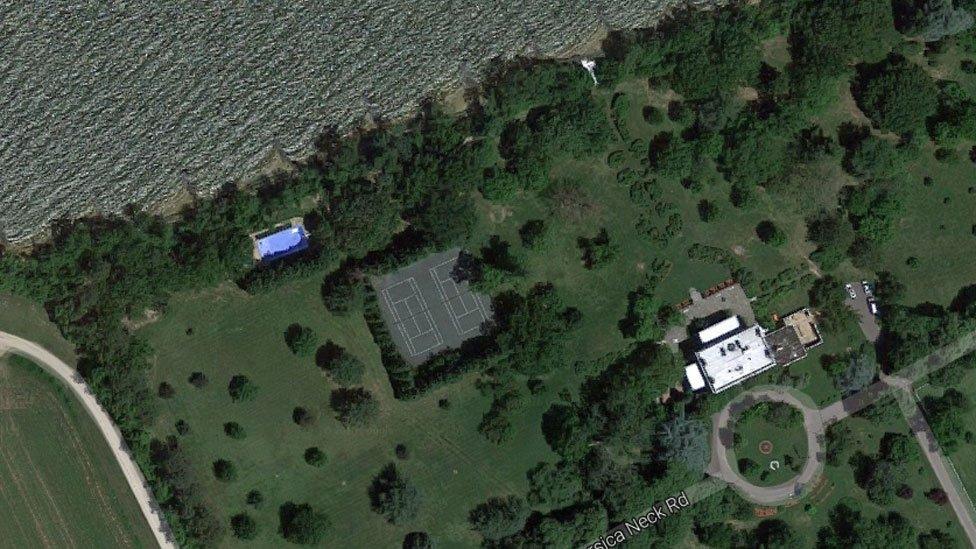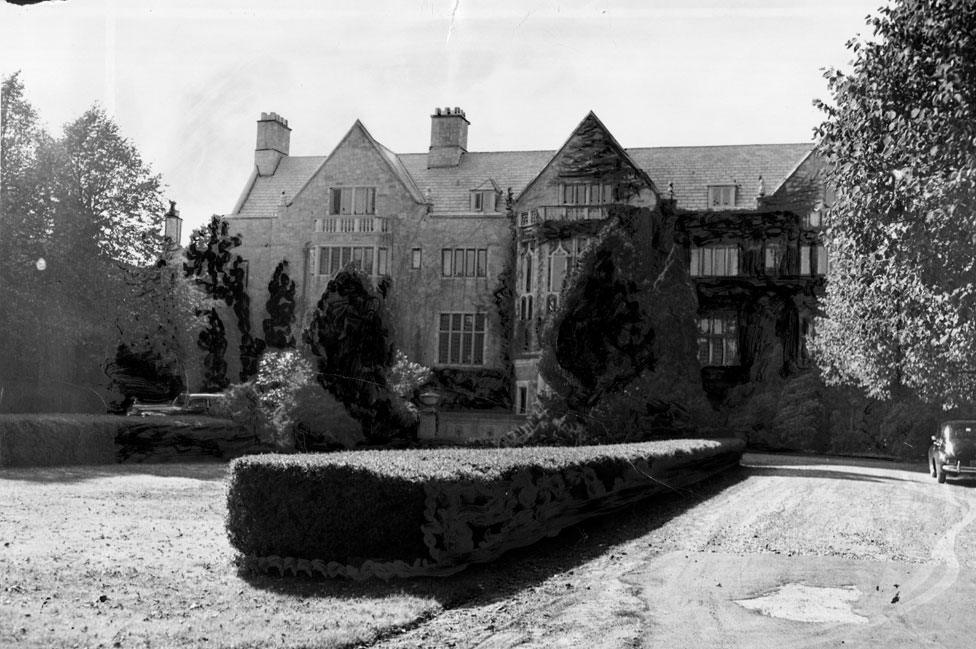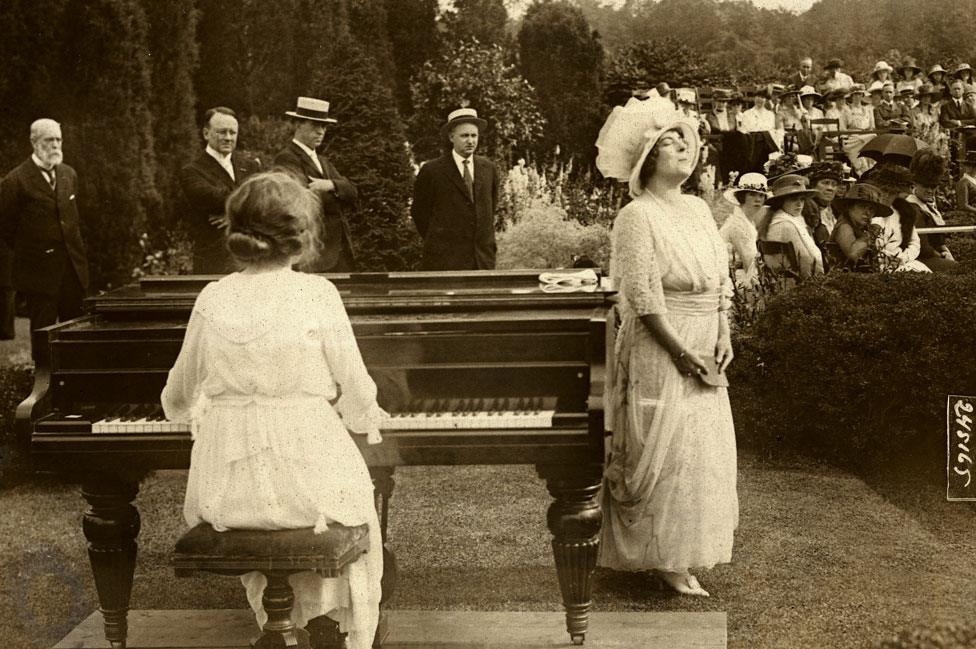Luxury Russian resorts in US crosshairs
- Published

A view of the Maryland property's docks from across the water
Two recreational estates used by Russians have been targeted by the White House as part of a wave of measures in a diplomatic row over cyber attacks. What goes on there?
The US has announced a raft of retaliatory measures against Russia over its alleged interference in the US election.
Among them is the closing of two sites in New York and Maryland used by Russian diplomats.
The US said they were being used for intelligence purposes but it is not clear if they believe the locations played any role in the cyber attacks at the heart of the row.
So what do we know about them?

Compounds or holiday homes?
There is even disagreement between Russia and the US about what these properties are.
A US State Department official referred to them as "compounds", which suggests a sprawling, high-security complex.
The Americans used the same term to refer to the location in Abbottabad, Pakistan, where Osama Bin Laden was found and killed by US forces in 2011.
But the Russian Foreign Ministry has described the two properties targeted by the US as merely "dachas", the Russian name for a holiday home - a far more innocent image.

Maryland

The tennis courts and pool can still be seen
According to US media, the property in question is a retreat in Maryland used by the Russian Embassy.
It can be found at Pioneer Point, Centreville, on the Eastern Shore about 60 miles east of Washington, across the Chesapeake Bay.
The 45-acre site used to belong to John J Raskob, a financial executive at General Motors who helped to finance the construction of the Empire State Building.
It was bought by the Soviet government in 1972 and used as a resort, sparking fanciful fears among neighbours that Russian submarines might be spotted in the bay, the local media reported colourfully at the time.
But dinner parties and gifts helped relations improve, reportedly.
"As far as neighbours are concerned you couldn't ask for better," one resident told the Washington Post in 1979. "They don't bother anybody."

Raskob at his Maryland home
In 1987, a Post reporter was given a tour of the site by Oleg Sokolov, minister of the Soviet Embassy in Washington.
Under the headline "A rare peek at Soviets' Eastern Shore resort", the article described, external video cameras and a chain-linked fence but a very open attitude by the host.
"We have nothing to hide here," said Mr Sokolov, dressed for tennis.
Back then, there were two brick mansions built by Mr Raskob, a tennis court, a swimming pool, a football pitch, a pier and six bungalows, which were mostly empty and locked. About 20 Russians were enjoying the facilities that day.
When the Soviet Union collapsed in 1992, the site was sold to the Russian Federation.
The Associated Press said one brick mansion had been renovated into about 12 apartments, and there were about a dozen cottages each with four apartments. The capacity in total was 40 families, each of whom pay a small fee used for maintenance.
Since then, the site has been rarely in the news - until today.

New York

Killenworth in 1946
Much of the US media has focused on a New York property - a huge house called Killenworth.
It has 49 rooms and can be found in Glen Cove on Long Island's north shore, a short drive away from Manhattan.
The Russians have long owned the former property of industrialist George duPont Pratt, but US officials have told the New York Times that it is often empty save a few caretakers.
The paper reports, external that relations became tense in 1982, when Ronald Reagan's government accused Russians there of spying on Long Island's defence and technology industries.
In retaliation, the Glen Cove City Council withdrew Russian access to free beach parking and discounted tennis permits.

In 1918, the renowned opera singer Madame Alda sang in the grounds
Buzzfeed, external has named another Long Island property at Oyster Bay as also being the property of Russia.
It said vans were spotted going in and out of it shortly after the White House announcement.

Do US diplomats have the same kinds of properties in Russia?
Yes.
The Russian foreign ministry suggested banning US diplomats from their "dachas" in Serebryany Bor near Moscow.
But President Vladmir Putin has opted for a softer response.
- Published30 December 2016

- Published22 December 2016

- Published27 October 2016
